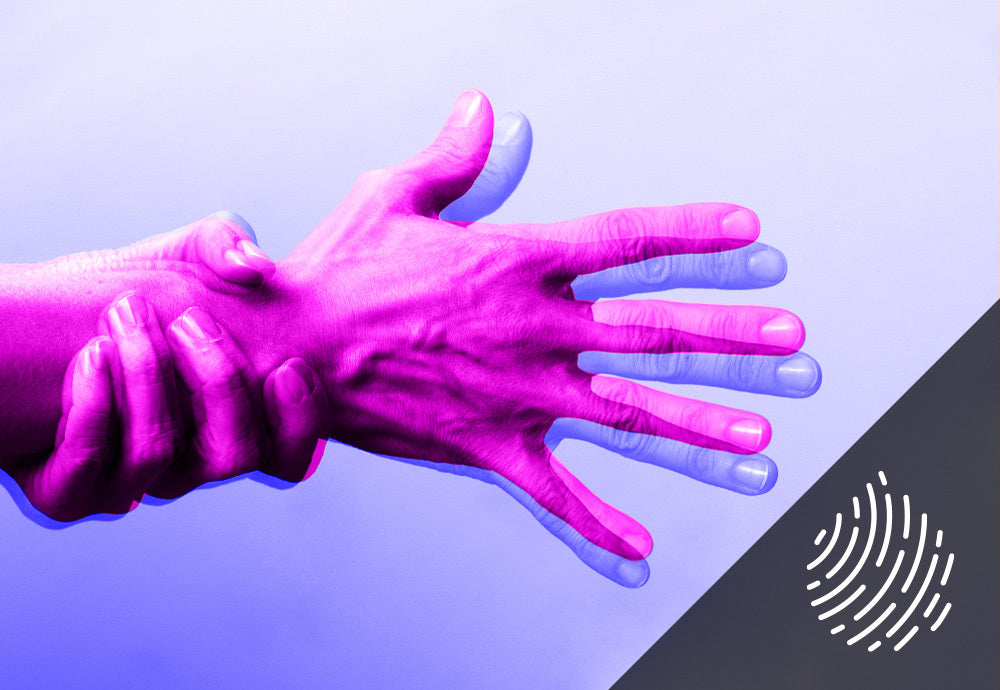Your Cart is Empty
FREE SHIPPING ON ORDERS $70+ | SATISFACTION GUARANTEED
Have you ever wondered how CBD works in your body?
If the answer is “yes,” you’re in the right place! We’re taking a deep dive into the system that largely governs your unique response to CBD, THC, delta-8, and other cannabinoids. It’s known as the endocannabinoid system or ECS.
In the late 1980s, scientists were on a mission to understand how THC worked in the human body. This led them to discover a cannabinoid receptor.
Like most research, this outcome led to more questions. Why do we have these receptors? How exactly do they function?
With the ECS research floodgates open, we started learning more about it. It turns out there’s a whole lot more to it than responding to THC.
Every creature with a backbone has an ECS. That’s why everyone and his or her dog seems to be singing (or howling) the praises of CBD — our bodies have a system that can communicate with it. But scientists believe the ECS also plays a critical role in regulating our bodies.
The state of optimal regulation is called homeostasis. Homeostasis is an all-systems affair. It depends on blood sugar, body temperature, fluid balance, sleep, and more to be in their “sweet spots.”
Homeostasis = good. Your body and mind are feeling their best in this state.
Before we knew about the ECS, how our bodies knew to strive for homeostasis or achieve it was a huge mystery. We’re still learning about this mission control for our health and wellness, but we know a lot more than we did before cannabis research revealed its existence.
Whether human, canine, squirrel, or feline, bodies are complex. To understand how the ECS keeps all systems running smoothly, it helps to understand all of its parts.
There are three main components of the ECS.
They all work together to help the body achieve homeostasis. Let’s grab our lab coats and microscopes and take a look at their individual roles.
In 1992, scientists determined that the ECS relies on neurotransmitters. Neurotransmitters are chemicals that help nerve cells communicate. They’re your body’s cell towers, pinging messages around.
Phytocannabinoids are neurotransmitters found in plants. That includes CBD, THC, and all the other cannabinoids in cannabis.
It turns out that our bodies produce their own neurotransmitters, too. They’re called endocannabinoids. The two known endocannabinoids are:
There may be more endocannabinoids, but scientists haven’t quite honed in on those yet.
Endocannabinoids seem to be the secret to inter-system communication in our bodies, helping our many body systems stay on track for homeostasis.
Before we go any further, we’ve been throwing around some mighty long words. Let’s get clear on the cannabinoid lingo.
Got it? Good. Onward!
Cannabinoids could ping messages to cells all day long, but without the right receptors, they wouldn’t be effective.
Enter cannabinoid receptors, aka CB receptors. You may have heard the human body has receptors for cannabinoids. Here they are!
While designed for endocannabinoids, they also recognize phytocannabinoids. CB receptors have real estate in nearly every nook and cranny of the human body and influence physical and mental health.

CB1 receptors interact with neurons in the central nervous system. That’s the brain stem, spinal cord, and brain, as well as vital organs — like the lungs and kidneys. They may also set up camp on other tissue and organ cells.
CB1 receptors are in charge of regulating serotonin, dopamine, and other neurotransmitters, which are a crucial part of the limbic system (the brain’s reward system). They’re also responsible for the noticeable effects of THC and the entourage effect, including:
CB2 receptors are most commonly found in the peripheral nervous system — the nervous system beyond the “hard wiring” of the brain and spinal cord. This includes the immune system. White blood cells, the tonsils, and the spleen are common CB2 receptor locations.
Where there’s injury and inflammation, you’ll find CB2 on the scene. Whereas CB1 is always on patrol, CB2 tends to wait for the signal (a sign of distress or injury) to respond.
CBD and THC have been found to trigger an anti-inflammatory response when they interact with CB2 receptors. Inflammation is a driver of many chronic health conditions — such as heart disease, osteoporosis, and autoimmune conditions.
How exactly the phytocannabinoid + CB receptor relationship works is unclear. But, research suggests that phytocannabinoids act like keys to CB1 and CB2 receptors, locking or unlocking their activity. Inhibition of activity may be why CBD seems to counteract some effects of THC.
Enzymes are proteins with the special job of triggering or assisting chemical reactions. The hard-working enzymes of the ECS are called:
Once an endocannabinoid has done its job, they work to remove it from your system. But their role is different for CBD and other phytocannabinoids.
For example, CBD might actually inhibit the FAAH enzyme, which prevents the endocannabinoid AEA from breaking down. Increased AEA levels are associated with reduced anxiety. This could be the reason for CBD’s anti-anxiety effect.
We’ve shared some tidbits about how CBD works with the specific parts of the ECS anatomy. But what does it all look like in motion?
Let’s visualize!
This isn’t to say that your body is the only component of your CBD experience. If your CBD isn’t bioavailable, your body won’t process it as well. At Pure Craft, we use nanotechnology (a scientific term for tiny particles) to make the most bioavailable CBD around. That means faster, better results for you.

The endocannabinoid system (ECS) plays an important role in maintaining homeostasis. It’s composed of endocannabinoids, receptors, and enzymes. Everyone has an ECS, regardless of cannabis use (or lack thereof).
The ECS was discovered in the 1980s. We’re still learning how it works, and how CBD works with it. The current hypothesis is that phytocannabinoids — like CBD — synergize with the ECS’s receptors and enzymes to mimic, amplify, or pause processes carried out by the body. Some of CBD’s interactions with the ECS have potentially therapeutic applications.
Since the ECS works with the whole body, everyone has a unique CBD experience.

The cannabis compound CBD has been popping up in Parkinson’s disease (PD) therapy and prevention conversations, propelled by success stories from p...
Read More
CBD is one of the most popular supplements on the market today. But you're a savvy consumer. You know just because something is popular doesn’t mea...
Read More
You know delta-8 as "weed-lite" or the "chillest of the cannabinoids." But what about all the potential health benefits of this unique compound? Wh...
Read More